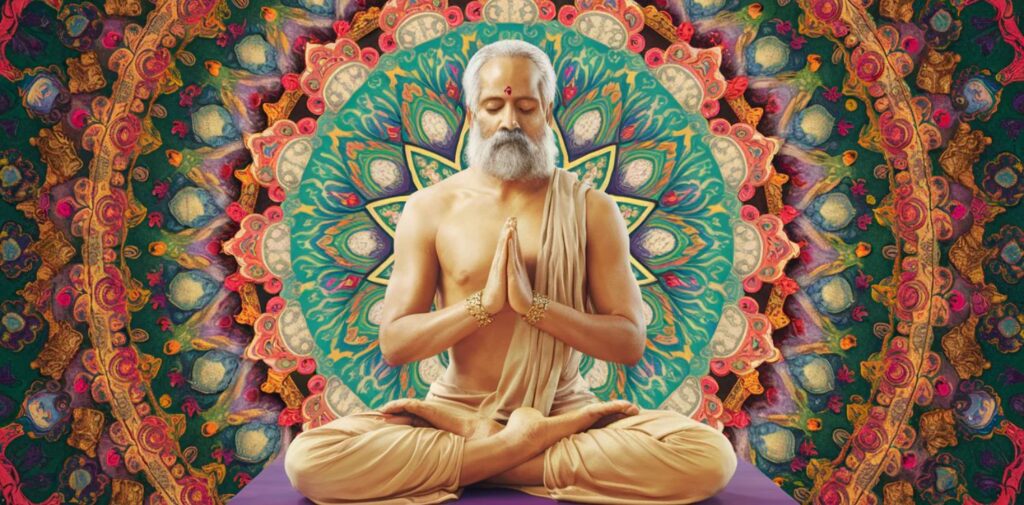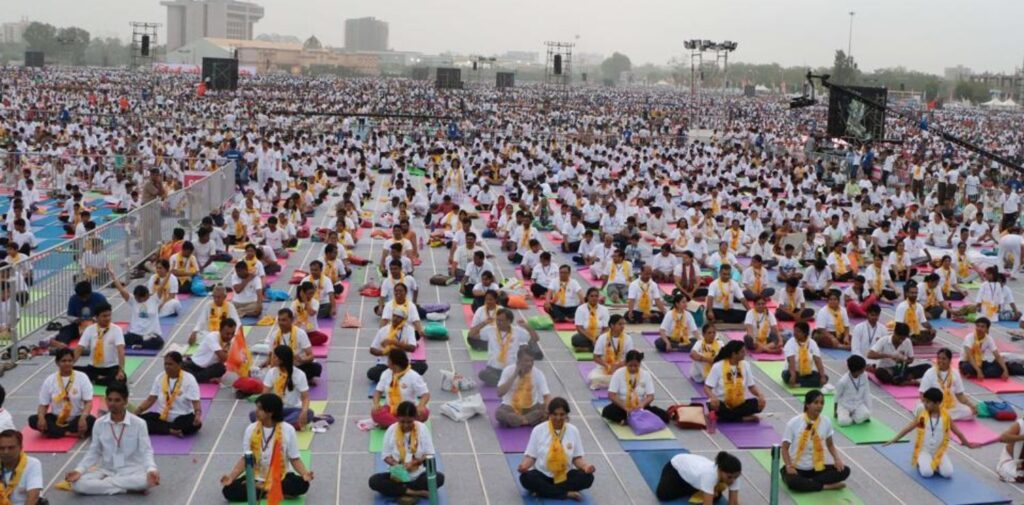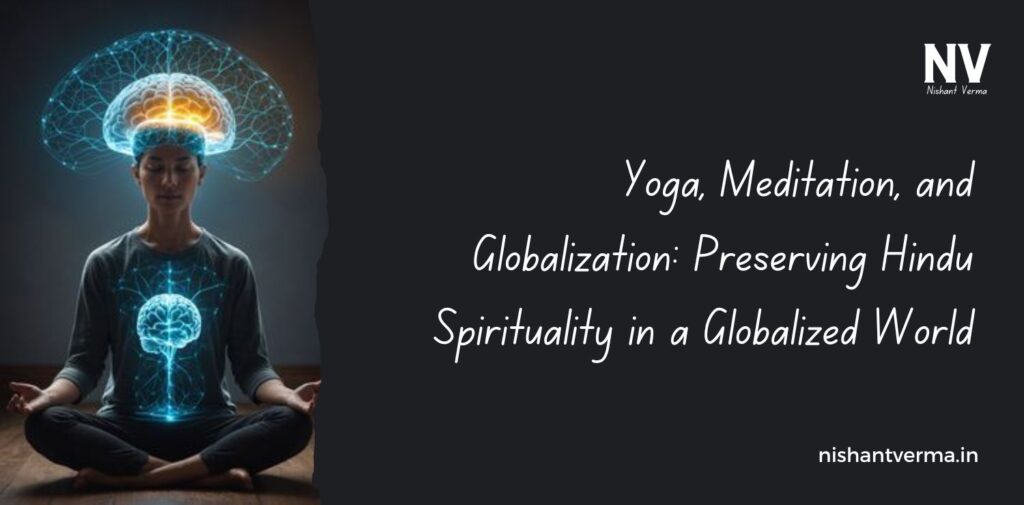In today’s fast-paced world, many people are turning to ancient practices like yoga and meditation to find peace, balance, and meaning in their lives. These practices, which originated in India, are now popular worldwide. As more and more people around the globe adopt these spiritual practices, questions arise about how we can preserve the rich cultural and spiritual roots of yoga and meditation while adapting them to the needs of modern society.
In this article, we will explore the role of yoga and meditation in a globalized world, and how we can preserve the essence of Hindu spirituality while sharing these practices with people of all backgrounds.
The Roots of Yoga and Meditation
Yoga and meditation are ancient practices that have deep spiritual and philosophical roots in Hinduism, one of the oldest religions in the world. Both practices are meant to help individuals connect with their inner selves and the divine.
- Yoga comes from the Sanskrit word “Yuj,” which means “to unite” or “to join.” It refers to the union of body, mind, and spirit. Yoga is not just physical exercises, but a way of life that includes ethical guidelines, meditation, breathing exercises, and self-reflection. It aims to create harmony between the body and the mind.
- Meditation (or “Dhyana” in Sanskrit) is the practice of focusing the mind and quieting the thoughts. It is an essential part of many Hindu spiritual practices, helping individuals to achieve inner peace, wisdom, and spiritual awakening.
Both yoga and meditation are designed to help individuals experience deeper states of consciousness, connect with their true selves, and understand the nature of the universe. Over the centuries, these practices have been passed down through generations of spiritual teachers, and their principles are rooted in the ancient Hindu scriptures, including the Vedas, Upanishads, and the Bhagavad Gita.

Yoga and Meditation in the Globalized World
As globalization has brought the world closer together, cultural exchanges have increased, and practices like yoga and meditation have found their way into many different parts of the world. People from all cultures and backgrounds are now practising yoga and meditation, often in a form that is stripped of its traditional spiritual context.
Yoga is now a popular fitness routine in many Western countries, and meditation is widely practised as a stress-relief tool. The benefits of these practices are well recognized – they improve physical health, reduce stress, increase focus, and promote emotional well-being. Because of this, they are no longer confined to Hindu spiritual seekers; they have become global practices embraced by people of all faiths and cultures.
While this global popularity has brought positive attention to yoga and meditation, it has also raised concerns about how the spiritual and cultural aspects of these practices might be lost or misunderstood. In the rush to make yoga and meditation more accessible to a global audience, the deeper teachings of Hinduism, such as the philosophy of karma, dharma, and the pursuit of moksha (liberation from the cycle of rebirth), can sometimes be overlooked.

Challenges of Globalization on Hindu Spirituality
The spread of yoga and meditation around the world has led to both positive and negative effects. On the one hand, it has introduced millions of people to the wisdom and benefits of these practices. On the other hand, the commercialization of yoga, especially in the West, has raised concerns about the dilution of its spiritual essence.
Some of the challenges faced in preserving the spiritual aspects of yoga and meditation in the face of globalization include:
- Loss of Context: In many Western yoga studios, the focus is often placed on the physical postures (asanas) and breathing exercises, with little mention of the spiritual and philosophical aspects of yoga. In its modern form, yoga may sometimes be seen simply as a way to get fit, rather than as a holistic practice meant to connect individuals with their higher selves.
- Cultural Appropriation: As yoga and meditation have become more popular worldwide, there have been concerns about the appropriation of these practices without a full understanding of their cultural and religious origins. Some critics argue that yoga is being marketed in a way that removes it from its Hindu roots, presenting it as a secular or “spiritual but not religious” practice. This can be seen as disrespectful to the traditions and teachings of Hinduism.
- Commercialization: The global demand for yoga and meditation has led to the creation of a huge commercial industry. Yoga clothing, expensive retreats, and celebrity yoga teachers are part of a multi-billion-dollar business. While these products can help spread awareness of yoga, they can also distract from its deeper spiritual message. The commercialization of yoga can sometimes reduce it to a consumer product rather than a profound spiritual practice.
- Misinterpretation of Teachings: Without a strong understanding of the spiritual context, some people may practice yoga or meditation in a way that misses its deeper meaning. For example, some individuals may focus only on the physical benefits without exploring the ethical principles (such as non-violence, truthfulness, and self-discipline) that are central to the practice. This could lead to a misunderstanding of what yoga and meditation are truly about.

Preserving Hindu Spirituality While Sharing Yoga and Meditation
Despite these challenges, it is possible to preserve the spiritual essence while sharing these practices with a global audience. Here are some ways that we can ensure the deeper teachings of Hinduism remain intact:
- Educating Practitioners: Yoga instructors and meditation teachers have an important role to play in educating their students about the spiritual and philosophical roots of these practices. By incorporating teachings from the Bhagavad Gita, the Yoga Sutras of Patanjali, and other sacred texts into their classes, teachers can help students understand that yoga is not just about physical postures, but a way to connect with the divine and live a life of purpose and harmony.
- Maintaining the Spirit of Yoga: While it’s important to adapt yoga and meditation to modern needs, it is also important to keep the spirit of these practices alive. Yoga is about more than just achieving physical flexibility or relaxation; it’s about living a balanced, compassionate, and mindful life. Teachers and practitioners should strive to maintain this deeper connection to the spiritual roots of yoga and meditation.
- Promoting Respect for Hindu Traditions: As yoga and meditation become more mainstream, it’s crucial to promote respect for the Hindu traditions that gave birth to these practices. This can be done through discussions, workshops, and cultural exchanges that highlight the history, philosophy, and spiritual significance of yoga in the context of Hinduism.
- Encouraging Mindfulness and Reflection: A key aspect of Hindu spirituality is the practice of self-awareness and reflection. By encouraging mindfulness and meditation, practitioners can connect with their inner selves and cultivate a deeper understanding of their place in the world. This can help preserve the transformative power of yoga and meditation in a way that transcends cultural boundaries.
Conclusion
Yoga and meditation have become powerful tools for personal growth, well-being, and spiritual development in a globalized world. While these practices are no longer confined to Hindu communities, it is important to preserve their spiritual roots and cultural significance. By respecting and understanding the deeper meanings, we can ensure that these practices remain true to their Hindu origins while continuing to benefit people from all walks of life.
Ultimately, the goal of yoga and meditation is not just to improve physical health, but to connect with something greater – whether it be the divine, the universe, or our own higher consciousness. By embracing the spiritual wisdom behind these practices, we can help create a world that is more peaceful, compassionate, and aware.




